One hundred and fifty years ago, the world looked a lot different â and so did our wardrobes.
On Monday evening, history stepped off the page and into the Joseph Strug Concert Hall as five graduatingÌęCostume Studies students showcased 1875: A Presentation of Historical Dress.
Each year, Dr. Perin Westerhof Nymanâs fourth-year class is tasked to become part-historians, part-researchers, and full-time garment makers. Over two semesters, students dig through archives, study 19th century garment construction, and source material internationally to create an authentic historical outfit from scratch.Ìę
This yearâs spotlight was on 1875 â a transitional year in Victorian-era fashion. It marked not only a shift in silhouette, moving away from the structured complexity of the First Bustle Period and towards more sweeping styles of the âNatural Formâ era, but also a change in attitudes.
While new technological innovations promised faster, more cost-effective production, other movements pushed back against mechanization. This tension granted students creative freedom to blend machine work with hand-sewing, allowing them to stitch together their own interpretations of the transitional period.
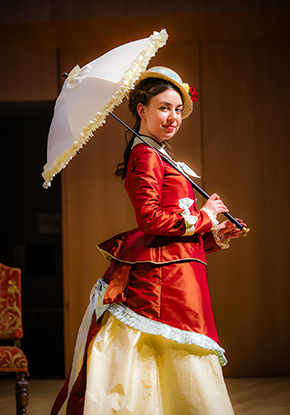
Catherine MacCaughan.
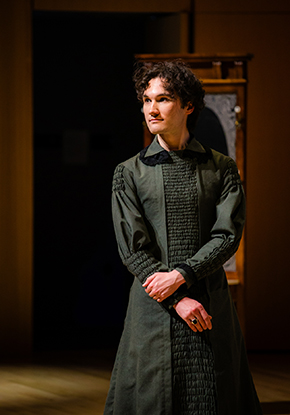
Julien Cameron.
The foundation of the showcase â and core of the dresses in 1875 â were the undergarments, often invisible but crucial structural engineering components that supported the dressâs shape.Ìę
âHistorical western clothing uses a lot of body shaping â a very different approach to the body than we have today,â says Dr. Westerhof Nyman. âNowadays, we think of altering oneâs silhouette as âcheating.â But in the Victorian Period, it was expected.âÌę
Before students could indulge in colourful taffeta, lace, and tulle, they spent the majority of their time meticulously crafting corsets, bustles, and petticoats all in pursuit of perfecting the iconic silhouettes that defined 1875.
Dreams come true â with much effort
For graduating student Sylvia Nowell, her dream of being a princess took shape in an elegant, sweeping Victorian ballgown. Thirteen metres of turquoise silk taffeta, six-and-a-half metres of silk tulle, and countless energy drinks later, Sylviaâs gown was ready to make its grand debut.Ìę
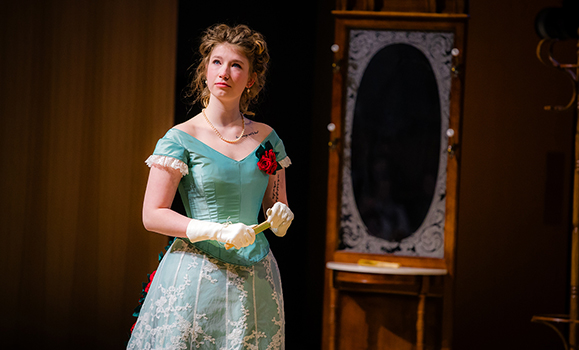
Sylvia Nowell.
But it wasnât easy.
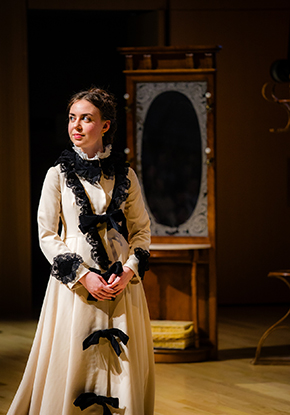 Like her classmates, Sylvia spent up to 15 hours a day working on her dress, sewing right up until showtime. The gown was embellished with white lace andÌęhandmade roses, taking 30 hours to craft from silk, a candle, and a pair of tweezers. Another 17-and-a-half hours were spent assembling the 145 leaf stalks that connected the flowers.Ìę
Like her classmates, Sylvia spent up to 15 hours a day working on her dress, sewing right up until showtime. The gown was embellished with white lace andÌęhandmade roses, taking 30 hours to craft from silk, a candle, and a pair of tweezers. Another 17-and-a-half hours were spent assembling the 145 leaf stalks that connected the flowers.Ìę
For Sylvia, the value of the project wasnât just the final result.Ìę
âWeâre not just learning about a specific period,â says Sylvia. âWeâre taught how to look at photos of designs and understand how they come together.â
Shown right: A creation from student Victor Kay, worn by Catherin MacCaughn.
That analytical mindset, paired with the skills drawn from a pre-mechanized period, is what Dr. Westerhof Nyman hopes her students carry forward. âItâs freeing to be taught something completely different,â she says. âIt reminds you that you have choices in technique, and you get to choose the ones that are best.â
As the students prepare to step into the realms of fashion design, museum curation, and costume for stage and screen, one thing is certain: theyâre ready to roll up their sleeves. But first, perhaps a well-deserved nap before their next trip in the time machine.
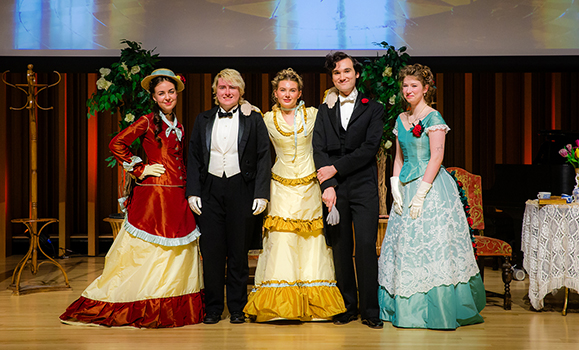
Left-to-right: Catherine MacCaughn, Victor Kay, Megan Webster, Julien Cameron, and Sylvia Nowell.

